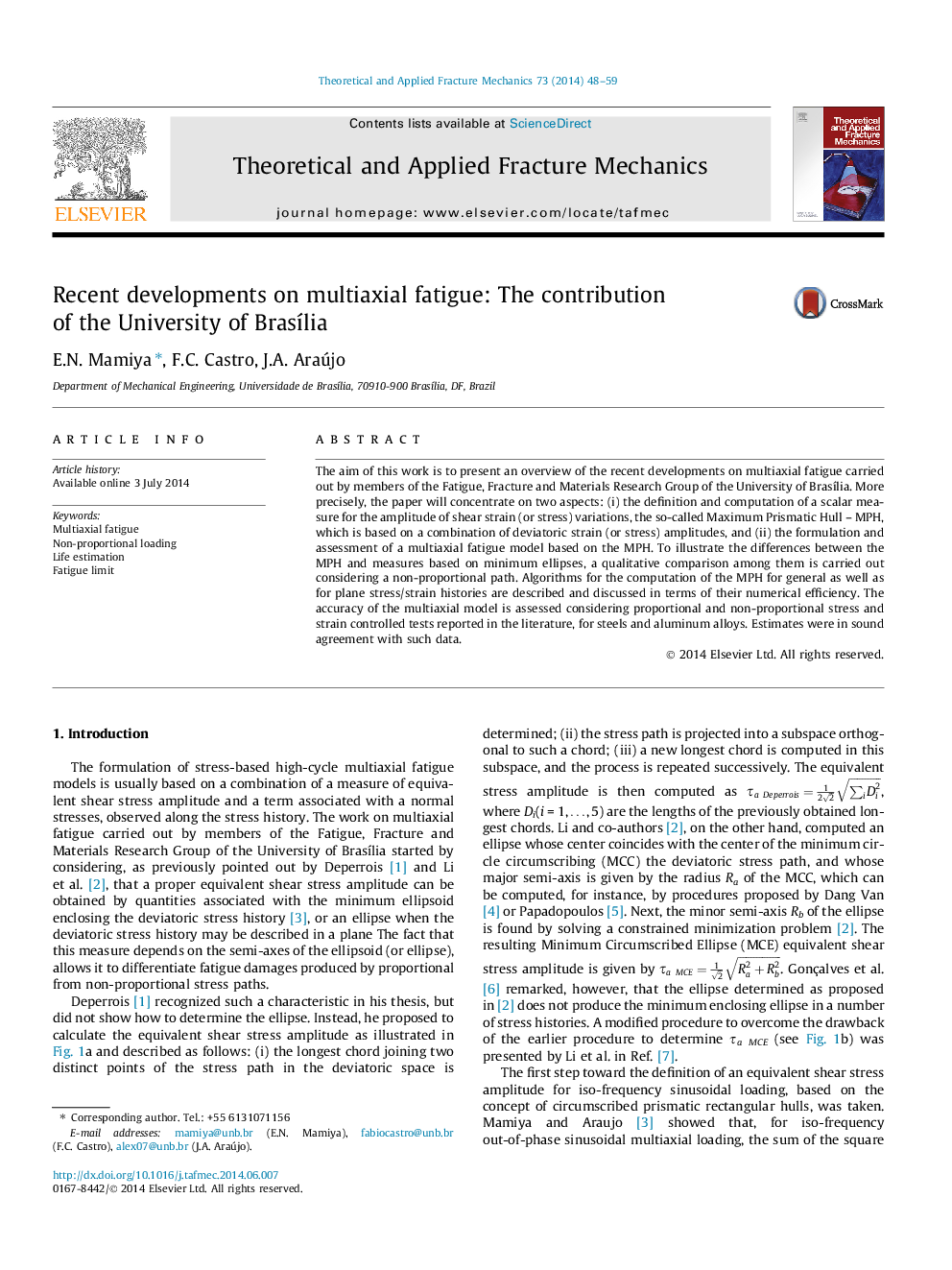| Article ID | Journal | Published Year | Pages | File Type |
|---|---|---|---|---|
| 807099 | Theoretical and Applied Fracture Mechanics | 2014 | 12 Pages |
The aim of this work is to present an overview of the recent developments on multiaxial fatigue carried out by members of the Fatigue, Fracture and Materials Research Group of the University of Brasília. More precisely, the paper will concentrate on two aspects: (i) the definition and computation of a scalar measure for the amplitude of shear strain (or stress) variations, the so-called Maximum Prismatic Hull – MPH, which is based on a combination of deviatoric strain (or stress) amplitudes, and (ii) the formulation and assessment of a multiaxial fatigue model based on the MPH. To illustrate the differences between the MPH and measures based on minimum ellipses, a qualitative comparison among them is carried out considering a non-proportional path. Algorithms for the computation of the MPH for general as well as for plane stress/strain histories are described and discussed in terms of their numerical efficiency. The accuracy of the multiaxial model is assessed considering proportional and non-proportional stress and strain controlled tests reported in the literature, for steels and aluminum alloys. Estimates were in sound agreement with such data.
